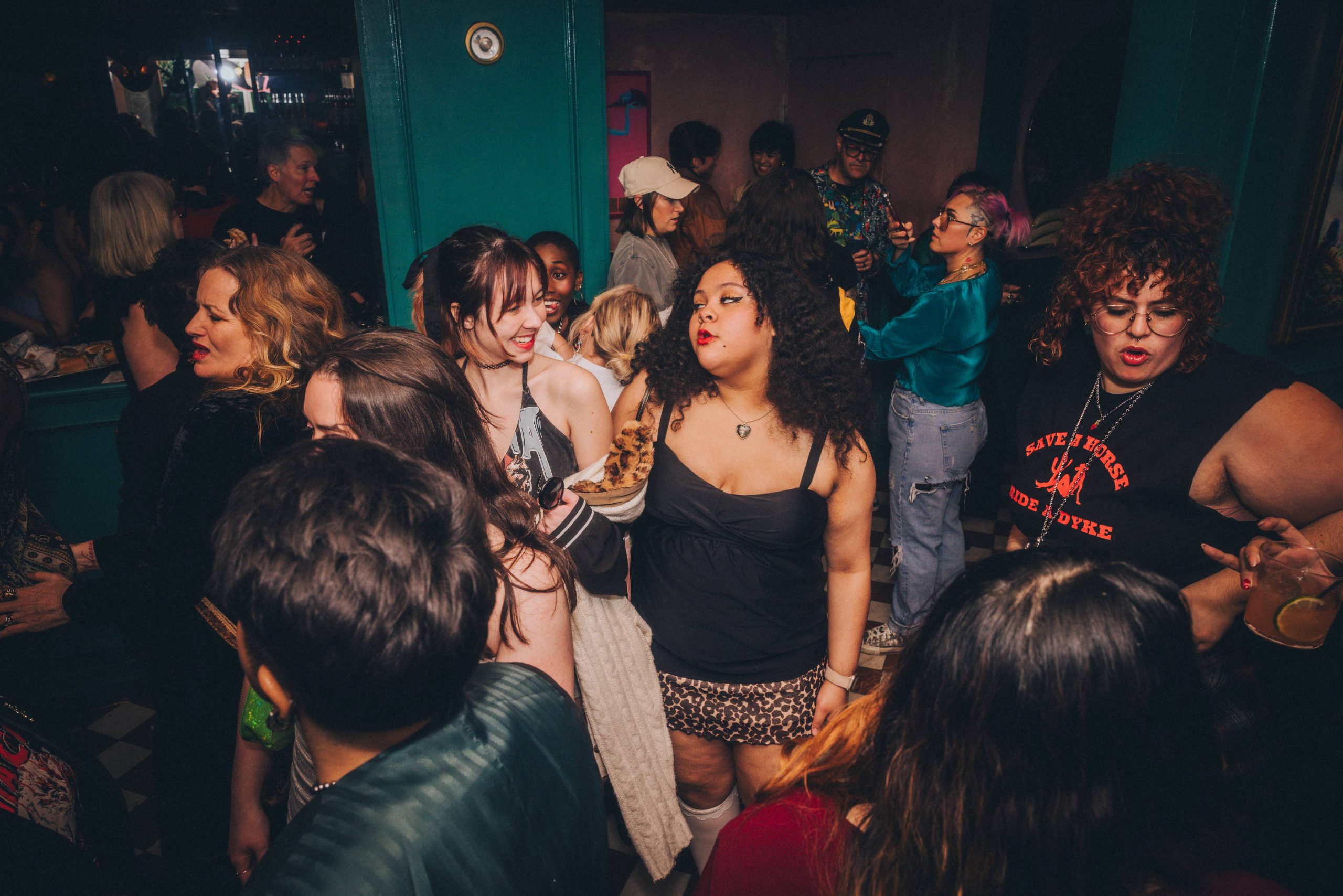
“Lesbi-honest,” we need to protect lesbian and queer spaces in LA
After this year’s shake-up in the lesbian bar scene, lesbian and queer folks are protecting safe spaces and implementing various efforts to build community.
By Monica Esquivel
May 9, 2025
Clubgoers on the dance floor for “U-Haul Party Night” held by Honey’s at Starlove in Los Angeles, CA on Friday, Jan. 31, 2025. (Photo courtesy of Sandra Jamaleddine)
The Los Angeles bar scene lost one of two lesbian bars in early January, leaving Honey’s at Starlove as the last one standing, a single shining star in the glittering LA nightlife. Still, after some backlash, reassessment and rebranding, The Ruby Fruit is officially back, meaning LA lesbian bars are two for two.
Leading up to their grand re-opening, their official website indicated that The Ruby Fruit would return soon. Before deactivating their Instagram account, they hinted that this was hopefully not the end for the bar, rather aiming for a “see ya later,” as stated in one of their since-deleted posts. Last month, their Instagram account returned, boasting a new look with a bright, lime green color and florals. The 28 individual posts stitch together, making a cohesive image on their main feed, displaying menu items including a selection of cocktails, wine and snacks.
Amid the historic LA wildfires, the owners of The Ruby Fruit, Mara Herbkersman and Emily Bielagus, made a devastating announcement to the LA sapphic community: The Ruby Fruit will be closing its doors. In a since-deleted Instagram post, the owners broke the news, stating, “Sadly, along with all the feelings of grief and shock that we have experienced over the last few days, also came this undeniable reality: that running our small business is no longer sustainable.” They continued citing the “financial impact” of the LA wildfires as the reasoning behind their closure, adding that “the math just isn’t mathing.”
To support the community and following their closing announcement, The Ruby Fruit owners and staff held a drive and welcomed donations to give back to those affected by the devastating wildfires. They also started a GoFundMe with a goal of $15,000, raising funds intended for their employees.
Emma Milkens is a lesbian DJ who often visited The Ruby Fruit and now lives in Oregon. She shares fond memories at the bar.
“I really loved that space. I got to go a few times when it’s not like packed to the brim, which it often is,” Milkens said. “It was like a really fun time and they had really good food, and the vibes were amazing.”
There were mixed reactions regarding the initial announcement of the bar’s closing. Many were unclear on how The Ruby Fruit could be impacted by the wildfires, considering the bar’s location wasn’t near the fire zones, and the owners claimed their workers’ homes were not harmed by the fires.
The abrupt and unclear response by the owners left many questions unanswered and the community grew skeptical. Many people urged the owners to remain open, emphasizing the importance of protecting lesbian spaces.
“More than anything, it’s very disappointing…” Milkens said. “Sapphic, women-forward, queer women and fem spaces are sacred. There’s not many of them left.”
The backlash from their handling of the situation led to people coming forth, sharing their grievances with the owners and the bar online, which likely led to the owners taking a break from their social media presence, taking the time to reassess their strategy and image.
Despite these issues, The Ruby Fruit remains an important part of the LA sapphic community, being the first sapphic bar to open after years of a nonexistent lesbian bar scene, in a city with the second-largest population of LGBTQ+ people in the nation, according to the UCLA Williams Institute.
The Ruby Fruit is nestled within a Silverlake strip mall next to a Baskin-Robbins and nail salon, providing orange wine and a safe space for sapphics in the city since first opening in February 2023. The Ruby Fruit was the first lesbian bar to open since the Oxwood Inn in the San Fernando Valley permanently closed in 2017.
Claudia Regalado is a lesbian Latina residing in LA, claiming that the opening of The Ruby Fruit was a big deal within the city’s lesbian scene. Regalado shared how she was one of The Ruby Fruit’s first Instagram followers when they initially opened.
“There’s not really a lot of spaces for sapphic folks to make community. So once it [The Ruby Fruit] opened, it was definitely big news around sapphic folks,” Regalado said.
Only time will tell whether The Ruby Fruit will reap the fruit of their labor or watch “the fruit” spoil again; all we know is that the sapphic community is hungry for more places to call home.
The Ruby Fruit team was not available for comment.
Sweet Like Honey: The essence of Honey’s LA
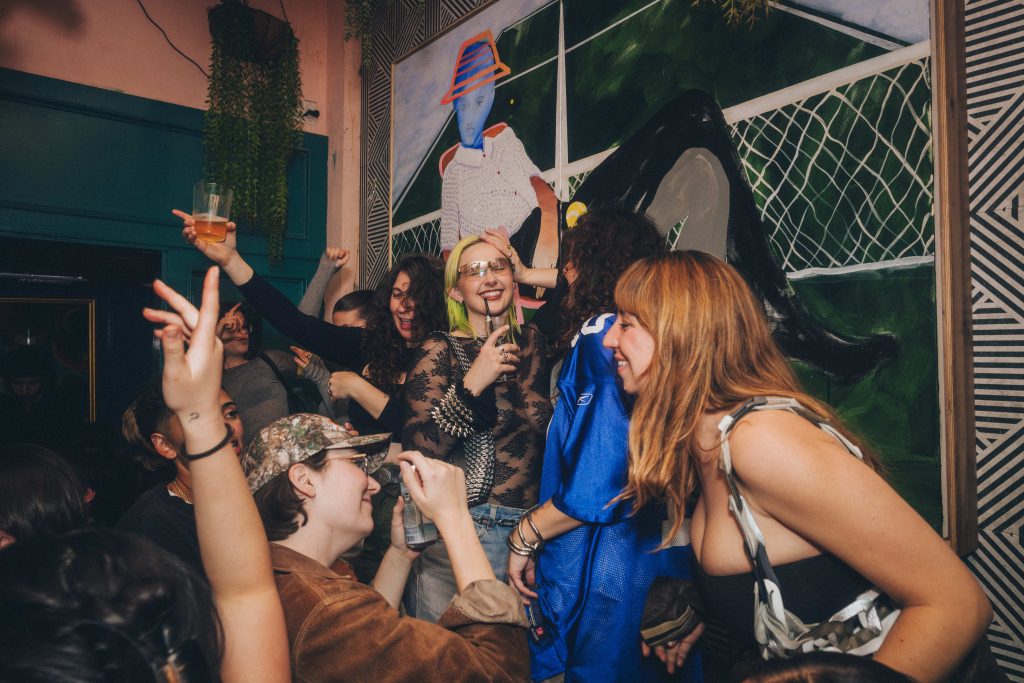
Clubgoers on the dance floor at the “U-Haul Party Night” held by Honey’s at Starlove in Los Angeles, CA on Friday, Jan. 31, 2025. (Photo courtesy of Sandra Jamaleddine)
Somewhere down Western Avenue near East Hollywood, there is a “honey sweet” spot sharing a space with a Super 8. Honey’s at Starlove is usually packed to the brim with clubgoers dancing shoulder-to-shoulder and its environment makes this bar a popular destination spot for queer folks. With differing DJs performing their sets, playing music across varying genres from EDM to pop classics, in addition to a different party theme and host, there appears to be a place for everyone at Honey’s.
Immerse yourself into the “sweet” world of Honey’s LA
Click the play button below to hear what a typical night at Honey’s sounds like and an overview of the club.
The venue boasts a vivid color scheme with bold zebra prints, potted plants hanging from the ceiling, a checkered tile floor and a dazzling disco ball. The eccentric space is considered “a queer bar and watering hole serving LA,” co-owned by Kate Greenberg and Mo Faulk, seeking to provide an inclusive space for queer, lesbian and trans folks, according to the Honey’s LA website.
If Honey’s could be described as a drink, Faulk would describe it as an Adios Motherf*cker, simply a concoction of everything at the bar, capturing the fiery, bold and inclusive spirit of the bar.
Some of their most popular events include “U-Haul Lesbian Night,” reclaiming the “U-Haul lesbian” stereotype and adding a fun twist. Another popular recurring party held at Honey’s is named “Ballet School,” which is described on their posters as neither ballet nor school, rather a night featuring pole dancers, so hang up those ballet shoes and bring some dollar bills instead. Through drives and fundraising events, Honey’s LA also focuses on community engagement and giving back.
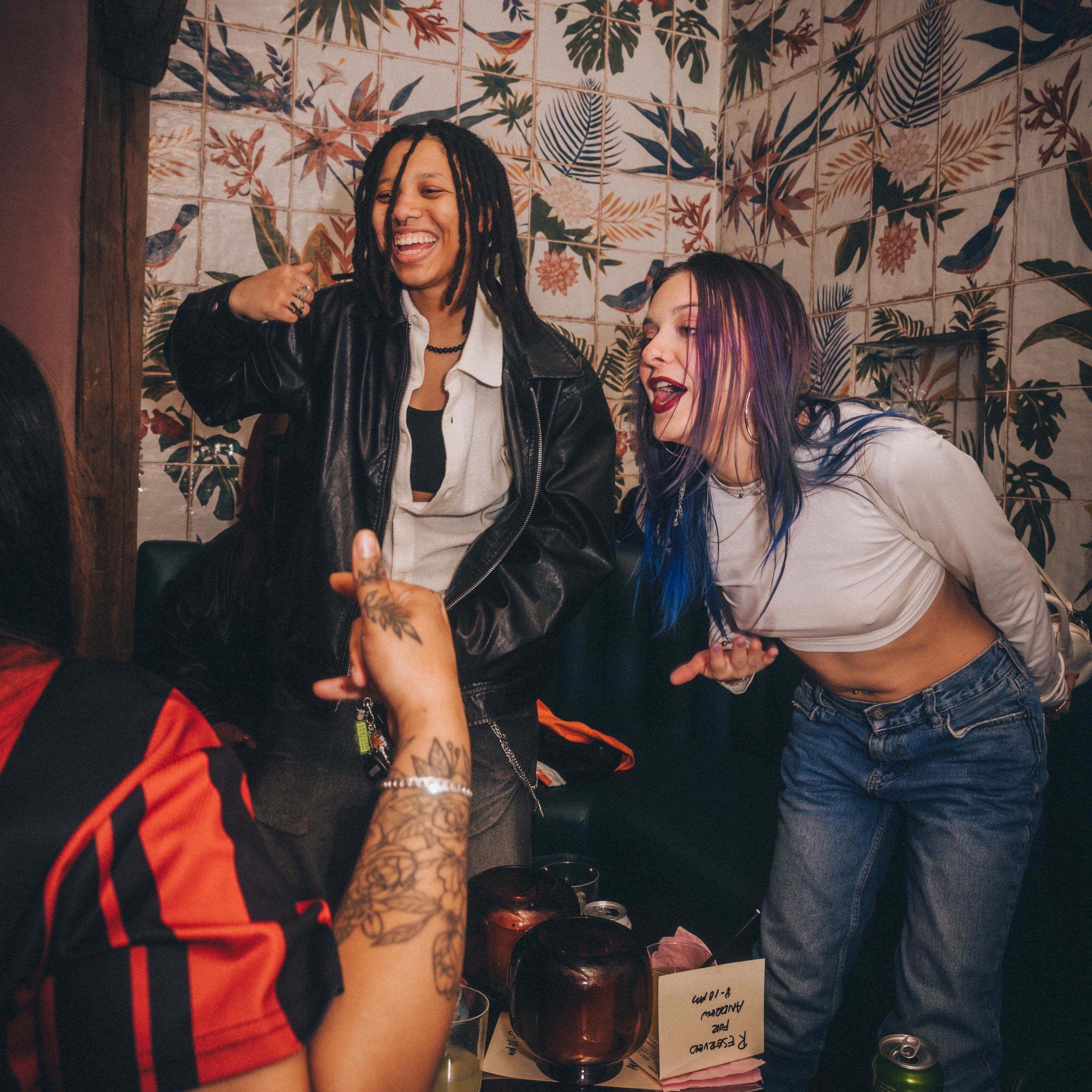
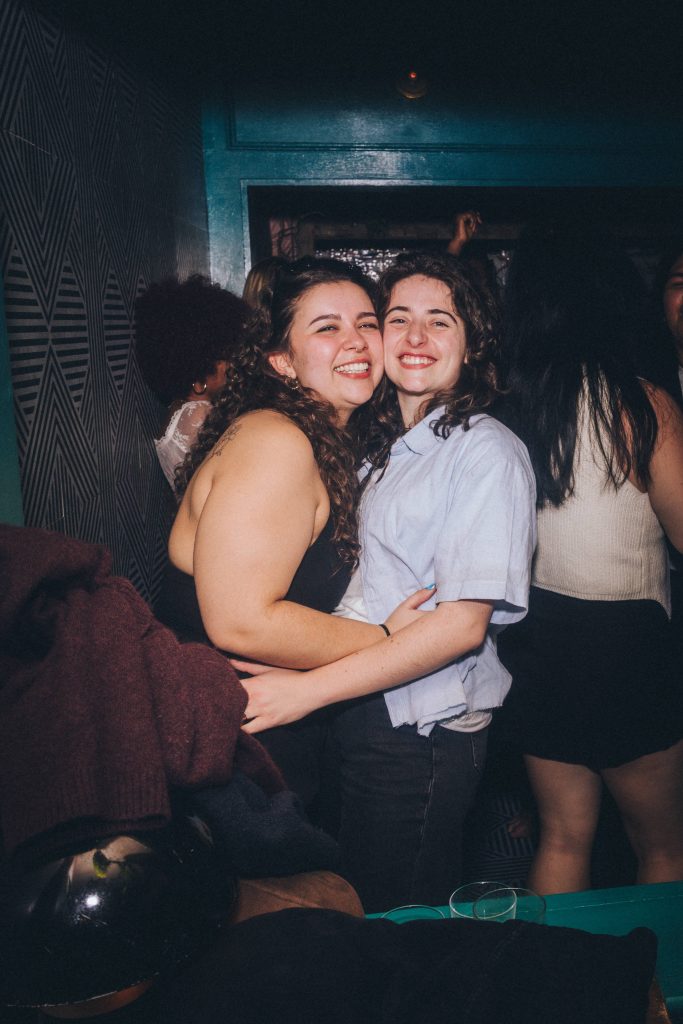
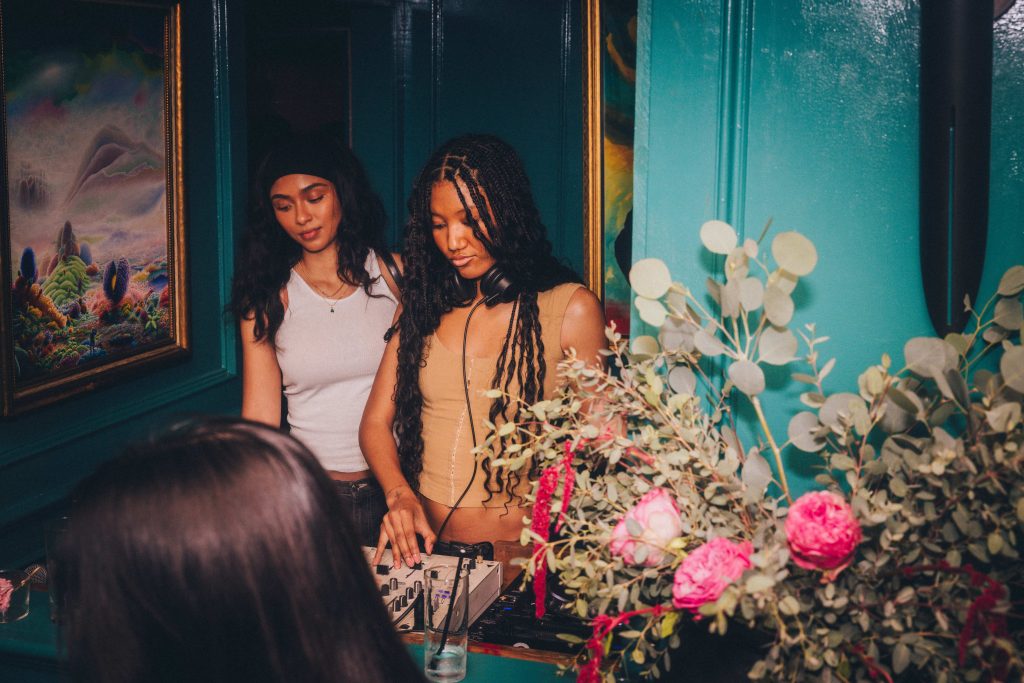
Co-founder, Mo Faulk, who uses she/they pronouns, shares that following their career playing professional basketball she “accidentally” became a community curator, hosting queer parties around Los Angeles because she noticed the need for a designated nightlife space. They created “Formless,” an event platform to curate artistic spaces that embraces diverse communities, which paused during the COVID-19 pandemic. In February of 2023, Faulk received the opportunity to hold a residency, which has grown into what we know now as Honey’s.
“What was supposed to be a residency [turned to] something that lives permanently,” Faulk said. “Which has been incredible to have a space to continue curating events, parties, engagement parties, all types of things for our community.”
Greenberg came to Faulk after hearing about their “Formless” parties, pitching the idea of working together to create Honey’s. Two strangers with no name for their proposed bar came together to pursue their shared goal of creating a welcoming space for LA queer folks, as Faulk recollects it.
“It was all just kind of like a Hail Mary, you know, we didn’t know each other,” Faulk said. “We just kind of trusted that we had the same vision and same want for like a place. It was pretty honestly lucky enough to be really seamless.”
Faulk says the current lesbian scene in Los Angeles is growing, with an increasing number of lesbian parties, but emphasizes that Honey’s is sadly one of two bars specifically for lesbians in the city.
Want to know where the party is at?
Here is an interactive map depicting LA lesbian bars and other queer-friendly events for the sapphic community.
Charlotte Macmillan recently visited Honey’s for the first time and shared feeling concerned; she’s felt like a fish out of water when visiting certain spaces, afraid of being alienated or ostracized due to her identity, but that didn’t turn out to be the case. Macmillan had positive reviews for her night at Honey’s.
“Honey’s was popping. People were dancing, hot people were there, single people were there,” Macmillan emphasized.
Faulk weighs in that their key for success is rooted in their “openness” to working with a diverse group of people and events, catering to different facets of the community and their interests. The next steps for Honey’s include continuing to work with other collaborators and brand partnerships. On the horizon, they will be taking some West Coast flair to New York City Pride, working with another party named Chlomosexual in hosting a Pride weekend event.
Honey’s LA being one of two lesbian and queer bars in the city is not something sweet to suckle on.
Dr. Jordan Grasso breaks down some factors that may be linked to the long history of there being only a few lesbian bars in LA. Dr. Grasso is a Research Data Analyst at the UCLA Williams Institute, previously working as an ethnographer, covering lesbian bars and queer pop-up events throughout Los Angeles.
The biggest factor affecting the lesbian bar scene is money, according to Dr. Grasso. Running a bar is expensive and the gender wealth gap contributes to financial issues of sustaining a business.
“If there’s this man who owns a gay bar for gay men, and he’s partnered with another gay man compared to two queer women,” Dr. Grasso explained. “That’s going to be an incredible difference when it comes to pay gaps, as far as income right, income gaps, rather.”
The requirements to open and maintain a bar business may take a toll on owners and add additional barriers. With the various licenses and permits also come expensive fees, on top of rules dictating what you can and cannot do. These barriers may be the cause behind the limited number of lesbian bars in Los Angeles.
Milkens says protecting lesbian and queer bars is key in building community for some people, which is of utmost importance during the rise in anti-LGBTQ+ rhetoric in the U.S. by the Trump administration.
“It’s always an important time to have queer spaces set aside for queer people, but especially right now…” Milkens said. “It’s not about shoving it in our opposers’ faces, but we’re not going anywhere, and we need this community to get [us] through [these times].”
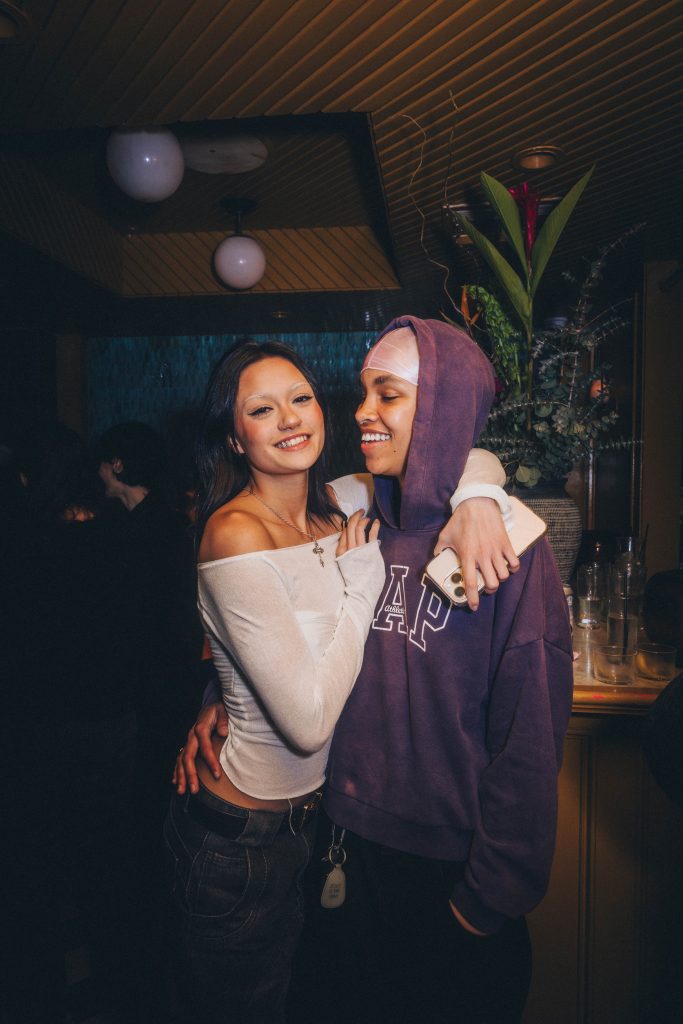
Lesbian bars closing and the concern over safe spaces is an issue that isn’t unique to the city of Los Angeles but rather extends to the nation as a whole.
There are at least 35 bars in the United States that are specifically geared toward queer women as of 2020, according to NBC News. Other outlets share more recent numbers with fewer bars which further demonstrates the steady decline of lesbian and queer bars, touching upon the need for community.
Dr. Grasso suggests the lesbian community is searching for community, not a specific space. Some lesbians argue the future of building community doesn’t necessarily need to occur within a bar setting. Regalado says there are endless ways to build community that don’t involve drinking, which can be more accessible to people who are sober or not interested in consuming alcohol.
“I just do think it’s important to make more spaces where it’s like, I don’t need to be drinking in order to meet other queer people,” Regalado said.
One important step in building community is finding it, and Sapphic LA helps with just that.
Finding Community
Sapphic LA was founded by Anita Obasi in 2023, their newsletter and Instagram account (@sapphic.la) provides resources to find sapphic-friendly events and spaces for queer people to participate in, essentially a city guide for the sapphic community. If you follow their page or subscribe to their newsletter, every week, Sapphic LA will send out a list of varying events and information.
“If I were to summarize what sapphic LA is, it’s a queer resource hub for Los Angeles,” Obasi said. “I would say it’s like a dynamic platform for facilitating queer connection and I think it is kind of like a starting point for folks to explore how they want to exist in LA, within queer community.”
Obasi is a first-generation American, half Indian and half Nigerian, which oftentimes led her to feel on the outside and not necessarily know how to assimilate into different groups, in addition to her queerness, which naturally led her to seek community and curate safe spaces for others.
When Obasi moved to LA in 2020, she found it difficult finding queer events that weren’t specifically catering to cis-gay men, which added a barrier to her building community. That’s when Obasi started to compile events she heard about and track them for her own needs. At some point, she thought, “There are probably other people needing to find a way to more easily find these types of events,” which led to the creation of the Sapphic LA newsletter.
The first newsletter was created in January of 2023 with a reach that has steadily increased over time, gaining new subscribers every day since starting, which Obasi suggests is an indicator of the need for community.
“I found that the newsletter itself was like a central space for people to either start their journey of queerness, or if they’ve already found their queerness, kind of connecting the dots towards more tangible community,” Obasi said.
Seeing the glass half full
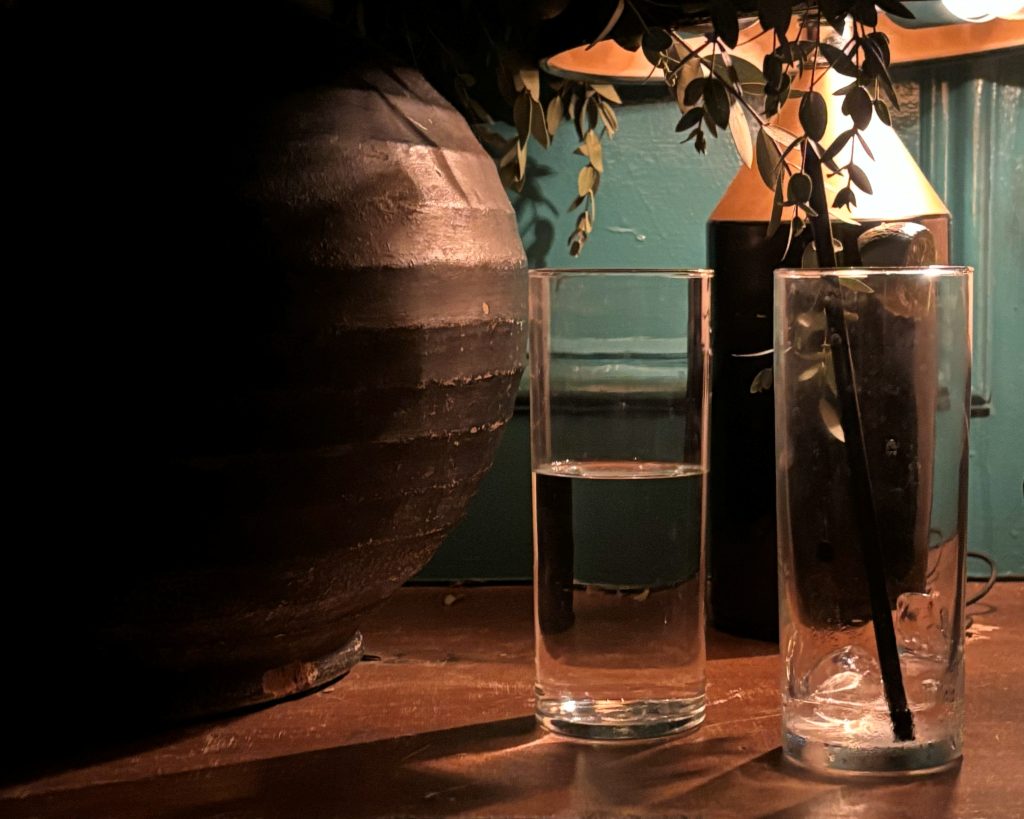
Spaces such as The Ruby Fruit or Honey’s LA represent the small lesbian bar scene in the concrete jungle of Los Angeles. Even though community building may be found on the black and white checkered dance floor at Honey’s LA, the LA lesbian and queer community suggests the possibilities of finding your people can extend beyond.